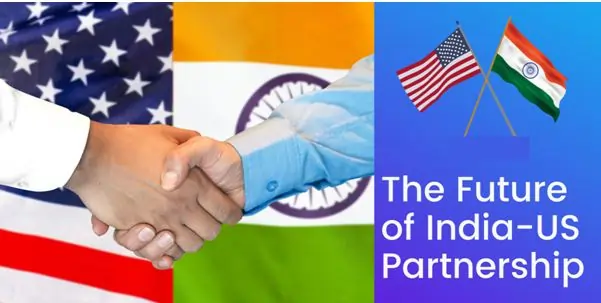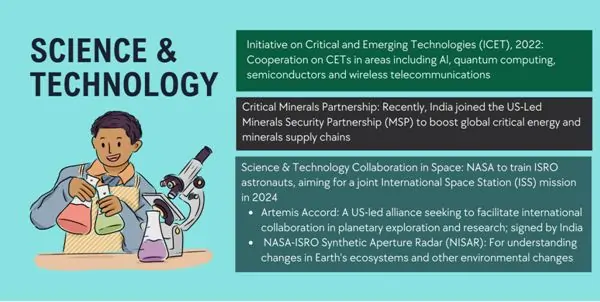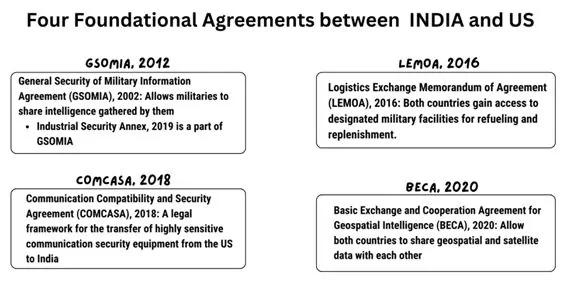
India is potentially better positioned than many of America's allies to handle the upcoming political transition in Washington. Regardless of whether the Republican candidate, former President Donald Trump, or the Democratic nominee, Vice President Kamala Harris, emerges victorious in the November election, it is improbable that India's relations will experience any interruption.While America's European and Asian allies express concerns about the potential return of Trump, India has improved its ties with the United States throughout both the Trump and Biden administrations. Delhi has valid reasons to be assured of the continuance of its ties with the United States. However, it is important for Delhi to be ready to handle both gradual and drastic changes in domestic US politics that may impact relations.The bilateral relationship between India and the United States is strong and has developed throughout time. Since the independence movement of India, these connections have become stronger, going beyond changes in geopolitical circumstances. Significantly, both countries cooperate on counterterrorism initiatives and tackle the increasing dominance of China in the Indo-Pacific area.
Areas of Cooperation between India and USA
- Diplomatic Ties: The diplomatic relations of India and the U. S are very active. It means that the issues of regional security, terrorism threats, and the promotion of the principles of democracy are exercised in pairs. The political dialogue takes place routinely, where issues of concern in the international system are discussed.
- Defence and Security: The two countries have mutual interests in defence and security, thus enjoy a good understanding of each other. These two nations’ defence relations involve Military exercises as well as sharing of intelligence information and cooperation in development of technology in defence. Consider it to be a sort of a game, such as chess, where both parties are manoeuvring for advantage.
- Trade and Investment: Economic cooperation can be defined as one of the main foundations. Volumes have risen sharply, while investment has been crossing a range of industries. Be it the IT services to pharmaceuticals sector, both the countries are benefitting out of this economic ballet. One can imagine Wall Street and Dalal Street doing the tango!
- Science and Technology: The domineering and nerdy side! India and the U. S. cooperate in various areas including research and development, space mission and innovation. If we’re talking about joint NASA and ROSCOSMOs projects or AI development centres, they’re scientific twins.

- Energy and Climate: Global warming and climate change are global issues which affect the whole world. India and the U. S cooperate in clean energy technology, emissions goals and other environmental policies. Imagine linking different structures with solar panels and wind turbines.
- Education and People-to-People Ties: Many students cross the world in search of academic education as well as exchange programmes. University campuses become cosmopolitan; people get to eat both samosas and hamburgers. The global classroom with a pinch of spices usually associated with the Indian sub-continent.
- Health and Pandemic Preparedness: This COVID-19 taught everyone, and rightly so, that this world is as global as the viruses are. In India which is plagued with high disease burden, it will come to a dearth of vaccine production partnerships by joining forces with the U. S in health system strengthening and pandemic preparedness. This has the feeling of a global health handshake.
- Agriculture and Food Security: Both countries have issues relating to provision of food Security, from the grain producing fields of Kansas to the paddy fields of Punjab. Agriculture science, technology dissemination and transfer and suitable agronomic practices hold them.
- Space Exploration: Indian Space Research Organisation and NASA come together on par with space, satellite.
Evolution of Relationship between India and USA over time
The Early Years: This complicated tango started with the independence of India in 1947. Try to imagine the India that was only recently liberated, and struggling to make its place in the international affairs. The United States also underwent a change of the role it was going to play in the post-WW II world. Still in 1949 during the cold war tensions, Nehru initiated a foreign visit to the U. S. to lay the foundation of a relationship that will have limitations and levers throughout the cold war period.
Gandhian inspiration and civil rights bonds: In 1959, the non-violent crusader like Mahatma Gandhi, Martin Luther King Jr. went on a trip to India. There he got acquainted with Prime Minister like Mr. Nehru and Mr.Gandhi’s family and scholars. King, however, when he came back to the U. S. remained steadfast in his belief in nonviolent resistance as he confessed it to be the most powerful tool that is available to oppressed people.
Eisenhower’s TajMahal Moment: This first visit was paid in by Dwight D. Eisenhower in 1959, thus he was the first serving President of America to visit the country. There in front of Taj standing amidst the splendour he represented a link between two democracies. The actual movement towards cooperation began during his meetings with the President Rajendra Prasad and the later Prime Minister, Nehru. It was as if the two heads of state were engaged in a dance in the diplomatic sense of the word and very deliberately.
University Affiliations and High-tech Relations: The 1960s witnessed another dimension of cooperationduring education we attain knowledge, get freed from misunderstandings and misconceptions and also learn new things in general. The IIT was set up with the aid of American universities within one of the first India University projects. Professionals from the U. S. made important contributions to the academic activities and research facilities.

Hesitant Handshakes to Dynamic Duo
- Strategic Interests: The two countries have seen their mutual interests in various aspects such as countering terrorism, stability of the region or balancing the increase of the influence of China in the Indo-Pacific region for instance. Try to picture diplomats sitting around maps attempting to come to a consensus of goals.
- Bi-Partisan Support: Seasons may shift and political pendulums may swing, but there is something that civilizations on both sides of pacific have agreed upon: India-U. S. ties remain steady.
- Global Vision: Both the countries are aspiring to have a vision of a more stable world. They are kind of co-authors of literature of chapters on climate change, health security and technological advancement.
Concern between India and USA:
- Defence and Security: Although both countries have closely coordinated on matters relating to defence, there are at times strains. These can be areas of concern such as export controls, technology transfer and security provisions. Think more of envoys sketching maps and arguing where joint initiatives with other countries may complement the protection of the given state’s interests.
- Trade and Investment: The relationship between India and the U. S then isn’t always a perfect economy tango. Trade deficits, access to markets and protection of IPRs are issues that open many an eyebrow. Imagine Wall Street and Dalal Street as two parties struggling to bargain for an agreement which may be smooth or a conflict.
- Climate Change: despite their concern with the threat of climate change, have different approaches to the problem. India focuses on development requirements while U. S sanctions steep cut in emissions intensity. It can be compared to the situation when a person is on the edge of a precipice trying to make it up, but at the same time not let himself fall.
- Geopolitical Alignments: India still maintains its strategic independence when it is variant from the U. S. interest sometimes. Maintaining relationship with China, Russia and Iran, for example, may sometimes be sensitive. Let us picture a geopolitical chess each step impacting the big board.
- Human Rights and Democracy: For democracies that share such values, it comes with it that they will come under scrutiny. At times, India’s domestic policies such as religious freedom and rights of the minorities make Americans in Washington a bit uncomfortable. This is akin to family therapy where there is always that nerve-racking talk, but it’s mandatory to have it sometime.
- Technology and Data Privacy: In terms of the issues of data privacy, internet surveillance, and digital sovereignty, both countries are part of tech hubs. Just think that Silicon Valley and Bengaluru are sending algorithms and encryption keys to each other.
- Regional Dynamics: The Indo-Pacific theatre is a firing range. What keeps both alive at night, China’s rise, maritime security, and freedom of navigation. Imagine naval vessels sailing across the waters constantly being on the look-out for any storm that may be approaching.
- Energy: India’s energy has problems of both “demand” and “supply” when it come being able to meet climate goals. Coal vs. renewables is considered a dilemma. Perhaps one could visualize a struggle for area when pollution sources such as smokestacks vie for space with devices that harness the sun’s energy such as solar panels.
- Education and Cultural Exchanges: These relations are doing well while the questions related to visas and students’ exchanges are still sensitive. It is like a fusion of two cultures: learning with each other while still at arm’s length.
How to overcome these Challenges
- Dialogue and Diplomacy: It is important for both of them to be frank in their discourse hence the need for vigorous diplomacy similar to a diplomat’s one. They should tackle such issues as; Specific democratic values, human rights, or matters to do with the specific region. It gives you a picture of two parties, drinking tea or coffee, negotiating even with power differential with civility.
- Balancing Interests: Both countries have to be aware that it is very important that their goals and objectives are, to some extent, divergent. These anxiety cues work like a seesaw; one goes up while the other goes down. The U. S wants India as a strategic ally against the rising might of china while India wants strategic independence. Doing so is quite delicate, however.
- Shared Goals: India and the U. S. needs joint initiatives, or in other words they have to work out a plot that will enable easier business cooperation. They should be able to find out the areas of convergence of interests, whether it is through combating climate change or advancing technology, or work on global health security.
- People-to-People Ties: However, more than that, the importance of the citizens cannot be ignored in this framework. Exchange programs, cultural festivals, and students’ meetings create a bridge between the peoples. It will allow one to picture Indian students in the U. S. universities or, for instance, American tourists visiting TajMahal.
- Trade and Investment: Economic relations serve as a basis. They should balance the trade and investment between the two nations, look at new opportunities and new areas of cooperation.
- Strategic Patience: It was said that Rome was not built in a day and it also applies to partnership not created in a certain span of time. India and the U. S. require strategic understanding and silence more than anything else.
- Technology Cooperation: From exploration of space to protection of cyber space, technology is the intermediary for all. This should be done at the most crucial domains and these should share knowledge.
- Regional Stabilization: Their battlefield is the Indo-Pacific theatre. Security, safety and stability are important when it comes to the design of governance of oceans together with freedom of navigation and dealing with threats at sea.
- Public Perception: Perception matters. This means that both countries should engage in the construction of their international image.